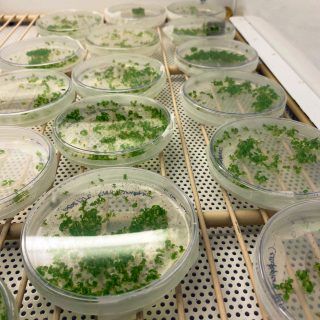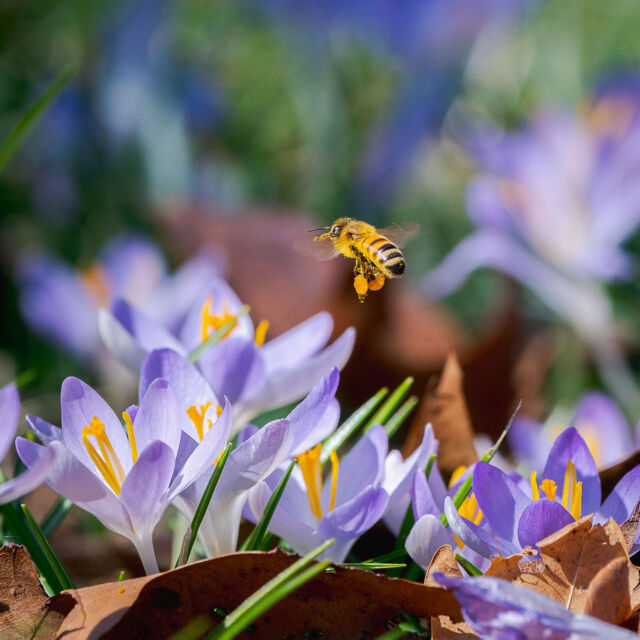Ferns in the Pfizer Lab Help Answer an Important Question
Dr. Lawrence Kelly is the Associate Vice President of Science Administration at The New York Botanical Garden.

Ceratopteris ferns growing in petri dishes
While our essential horticulture staff are caring for our outdoor and glasshouse collections during our temporary closure, NYBG’s essential science staff are equally hard at work.
Inside the Pfizer Research Laboratory, living collections that are important to ongoing botanical research are still looked after—including these ferns. These young Ceratopteris plants are growing in petri dishes for the time being, where they’ll have an easier time maturing until they’re large enough to be transplanted. From there, they’ll help our scientists in Genomics and Molecular Systematics understand a crucial question.
Why don’t ferns have flowers?
Ferns share most of the same genes that plants use to make flowers, yet they don’t put them to use. So, why do they have these genes, and what are these genes doing for the ferns?
These Ceratopteris plants will be raised until they produce spores, the single-celled units that ferns use to reproduce, at which point our scientists will be able to look at the genes that are involved in the processes that make those spores.
This is just one of the many ongoing projects happening behind the scenes in NYBG science. Stay tuned for more!
SUBSCRIBE
Enter your email address to subscribe to this blog and receive updates on new posts.











